The Reichstag is guarded by the Heer (Army), which uses its imperial 1916 emblem: balkenkreuz (equal-ended cross).
Troops wear uniforms made of "imperial gray" fabric.
On the topic of warriors, the Nazis also dissolved ancient Orders of Chivalry, because those knights opposed them. After the Nazis, the Soviets created an "Iron Curtain" through Germany and banned knighthoods. During the reunification of Germany, Orders of Knights and Orders of Merit were re-established. Nowadays, they focus on charitable and nursing efforts, and they are proud of their work.
Strolling east from the Brandenburg Gate, Lewis and I admired the city's oldest boulevard: Under the Linden, named for the rows of linden trees that grow along it. It was created in the 1600s by King Frederick I, who planted the trees to hide desolate marshes and rickety slums. But King Frederick the Great redesigned the boulevard splendidly in 1740. That day, he rode there in his carriage with his royal architect (Knobelsdorf), chamberlain (Von Pollnitz), and the chief of police. Documents say that he invented designs with lightning-fast creativity, and he personally paid for the civic improvements (since the nobility refused to dwell there). To doubters, the king said, "Blessed are they who believe without having seen." The boulevard and posh neighborhood remains successful... even after four wars. Remarkably, the young Frederick completed his project while on the verge of overthrowing Europe's old politics and fashioning an entirely new identity for all of Germany.
A pedestrian median is in the center, and kiosks were busy selling coffee, pastries, and currywursts.
The stately street also contains the Hungarian, British, and Russian embassies, along with a modern rebuilding of the Commandant's Mansion (originally built in 1654).
Across from his pink opera house, Frederick built a yellow home for his brother, Prince Henry, in 1748. It was named Prinz Heinrich Palais, but it was converted to the University of Berlin. During the Soviet Occupation, defiant students and faculty were sentenced to years of "hard labor" or executed. Normalcy resumed after Germany's reunification.
In that vicinity, the Kronprinzenpalais (Crown Prince Palace) was reconstructed where it originally stood since 1663. Initially, it was the home of the parliament's Cabinet Secretary. In 1732, it was remodeled grandly under the supervision of Frederick the Great to be his urban home as Prussia's crown-prince.
After his accession, he gave it to his brother, Augustus. In 1856, it was redone in neo-classical style for the future King Frederick III. Surprisingly, it was one structure that the Soviets rebuilt.
At the eastern end, a bronze statue from 1851 honors Frederick on horseback facing his City Palace. The statue was encased in cement to protect it from WWII.
As we walked, we saw an antique car that tourists hired to give tours.
We observed doormen from the Aldon Hotel buying pastries.
I noticed a perfumery that used images of Frederick the Great.
We made our way to the Galeries Lafayette shopping center.
I was fascinated with the technology on a dump truck, where a mechanical shovel put trees in the planters on the pavement.
Back at home, the city relies on manual labor, which makes more mess, costs more overtime, and takes longer to finish.
The shopping center had a marvelous globe-like center that was enclosed with glass and allowed sunlight into every level.
However, the entire place lacked the vibe and energy that we witnessed at KaDeWe, and its employees looked dull and lackluster.
We left.
We crossed the intersection and noticed a handsome Italian restaurant named Bocca di Bacco (Mouth of Bacchus), which opened in 2001. (Bacchus is the Roman god of wine, agriculture and fertility). Looking in the windows of the historic building, we were enticed by what we saw, so we lunched there. Everything was perfectly lovely.
The German maître d' welcomed us with an Italian phrase. We remembered some phrases from our time in Italy, this year, so we charmed him with the appropriate response. He reverted to his native language, but as soon as we spoke in English, he switched to English. The popular restaurant was bustling with lunchtime patrons. While our table was readied, the maître d' ushered us to a waiting area near the bar.
We sat on velvet armchairs and watched the female bartenders shaking frothy cocktails. In front of an illustration of Frederick the Great, a five-branch candelabrum was aglow, and its candles illuminated an assortment of Christmas cakes for sale.
We watched a cluster of waiters sing Happy Birthday in English to a group of Russians at a candlelit table.
A smiley hostess escorted us to our table: a deuce against the wall. Our blonde waitress served oven-warm bread, which we dipped in platefuls of olive oil mixed with balsamic vinegar.
Providing great value, the upscale restaurant offered a 3-course lunch for €28, and I had it. Lewis ordered a la carte and added some things for us to share. While our Tuscan white wine was poured, he ordered a €16 portion of smoked Burrata, salami, mortadella, tomatoes, and a basil emulsion.
Then, we shared €19 grilled Duroc pork belly, layered with creamy mustard. (Germans love mustard, and I do, too). The dining room manager smartly divided it on two plates.
We wanted a Pasta Course before our Main Course. Tantalized by their homemade pasta, Lewis chose €20 Linguine with Clams. The chef provided plenty of clams and no empty shells.
I ate a bowl of Spaghettini with Fish Ragout and cream of sepia ink. Dutifully, the waitress placed a "pasta twirling" spoon by my bowl. Lewis and I swapped pastas, so we could taste both. They were perfecto!
The dining room manager gave one of her happiest smiles when she saw our empty plates. She reset our table. From the kitchen, two food-runners presented medallions of breaded Monkfish with broccoli and olives in saffron sauce (for me), and a €40 fillet of Sea Bass with durum semolina wheat Fregola and seaweed (for Lewis). Every morsel was delicious!
My meal ended with jiggly panna cotta, which we shared. We delighted the waitstaff so much that the maître d' gave us free glasses of limoncello. That was sweet (literally). As we departed, he cheerily said, "Auf wiedersehen", which means "Farewell".
*To see our trip across Italy and its culinary triumphs, please use this link:
Remembering another eatery that we saw on the street, I voted for us to get dessert from it. Lewis agreed. So, we walked for a few meters and entered Lindner Esskultur (Lindner Food Culture). Two-thirds feature deli meats, artisanal cheese, sandwiches, and savory "prepared foods" that are ready to take-and-eat. The other part was crammed full with pastries! The shop excelled at affordable quality, and its staff was friendly.
Nobody gave scornful glances at the flamboyant gay man who entered wearing pink pants, a furry white coat, and white platform boots.
(Since the 1960s, Berliners pride themselves on acceptance).
The pudgy woman behind the dessert section was happy to sell me a piece of homemade apple strudel. When you're in Germany, you must try an authentic version. It is part of Germany's cultural gastronomy since the Middle Ages, and the name means "swirl". With the greatest care, she wrapped it in clear plastic before enclosing it in tissue paper and boxing it. That successfully prevented it from losing its powdered top or shifting in the box, as we carried it to the hotel. That type of thoughtfulness and precision reminded us of the bakeshops in Japan. (The strudel outclassed any that I had before: the bits of apple were lovingly-cut to be thin, the layers of pastry were delicate yet firm, and the baking made the apples soft without being mushy)!

Lewis bought several individual-sized tins of chocolate truffles to give his bosses. We also purchased a perfectly-layered entremet: mocha cake, chocolate mouse, vanilla cream, pistachio cake, fruit jam, chocolate cake, and citrus cream—all enrobed with green marzipan and topped with a chocolate wafer that had the store's logo. It was sliced precisely to avoid smudging each portion.
Next, we wandered through the Mall of Berlin: an enclosed series of shops. Some were interesting, as was the children's slide that swooped from the second level to the ground.
Impressively, the mall was decorated with real ornaments hung on faux trees. That never happens in America because retailers are afraid that vandals and thieves will steal the ornaments... so they only put lights on the trees. However, Berlin's malls and outdoor plazas were decorated with ornaments dangling from the trees—indicative of an honest society.
We exited onto Leipziger Platz. In the 1830s, it formed when immigrants established shops and cafes for travelers who waited to enter the city gates.
Shaped as an octagon, it was obliterated during WWII and abandoned during the Cold War.
After the wall came down, the area was rebuilt in the 1990s.
At the nearby Potsdamer Platz, we examined remnants of the Berlin Wall... left were they originally stood. Seen below, we posed by fragments of the wall.
Since its creation, the Berlin Wall was vandalized by outraged citizens and critics. It's one of the few places in Berlin to suffer from graffiti... whereas nearly anywhere in NYC's five boroughs is plagued with (non-street art) graffiti...
As a segue, Lewis wanted to visit Checkpoint Charlie, which was one of the few border crossings between East and West Berlin. It is situated in the Friedrichshain-Kreuzberg borough, which was formed in 2001 and named for Frederick the Great.
To get there, we walked diagonally southeast on Stresemannstrasse. The wide street occupies the space where the Berlin Customs Wall stood, from 1737 until 1860. It replaced the City Wall from the 1650s. King Frederick I had City Gates installed for collecting tolls and taxes.
We turned onto Prince Albert Street, named for the youngest son of Prussia's King Frederick III. The prince's palace was there.
During the era of The Third Reich, it became the headquarters of the SS (Schutzstaffel). Hitler allowed a warlord named Heinrich Himmler to control all of Germany's security and police forces from it. Wearing the most-known Nazi uniform, the SS insignia featured a totenkopf (skull & crossbones) that historically meant piracy and death. It was used by Frederick the Great's cavalry of Hussars, so the Nazis claimed to use it for "heritage reasons"... but the truth was that they were a "death squad". (Nowadays, the insignia is used by the USA's Marines Reconnaissance Battalion).
During WWII, the palace was obliterated.
The ruins were razed in 1955, and the Soviets left the exposed foundations and cellars to signify the demise of monarchy and reich (empire). The ruins are now part of the city's Topography of Terror exhibit.
As we arrived at the intersection with Wilhelmstrabe, we ogled at a huge monumental office building that filled the entire block. We walked along its longest side. It was the Detlev Rohwedder Haus.
It's appearance seemed like a mix of streamlined Art Deco and intimidating "block" concepts. That's because it is one of the few surviving buildings in Germany with original Nazi architecture! Built in 1935 for the Ministry of Aviation (headed a gluttonous braggart named Hermann Wilhelm Göring), it was the largest office complex in Europe. It contains 1,210,000 square-feet, 2,800 rooms, and 4,000 windows, and it was built in only 18 months. It is now occupied by the Ministry of Finance (Bundesministerium der Finanzen).
Across the street from it is a monumental relic of the Berlin Wall. Lewis and I walked along the longest portion of the preserved wall.
To give you a perspective, please watch Lewis' video of it...
Erecting the wall was a mammoth undertaking by the Soviets, with earth-shattering consequences. It symbolized Russia's defiance of the Western World. But it was not the first "wall" built by Soviet-controlled Russia; the first occurred after WWII by Joseph Stalin (the Soviet dictator). Similar to Hitler, he hired psychopaths to lead his administration and relied on a Secret Police to squash opposition. He depended on isolationist brainwashing via "controlled media" and sprees of midnight murders. He could not function in a normal society. Soviet megalomania ran rampant in the USSR, and many "occupied nations" were held as a "Soviet Bloc" (wall) arcross Europe.
Therefore, "walls" were part of Soviet culture.
Seen below, postwar Germany was divided and occupied by Soviet, American, British, and French forces. So was Berlin. America had a large input in creating a wall that divided Berlin... and that caused conflict and Cold War issues for decades. [Similarly, after postwar Korea endured decades of brutal occupation by Japan, America insisted that it by divided in half. It pretended that Korea couldn't organize itself. Yet, that separation also caused conflict and violence for decades... and hasn't been resolved between the halves!]
*In 1960, Elvis Presley (America's "King of Rock & Roll") produced a song about the American Occupation in Germany titled G.I. Blues.
Since Berlin was within the Soviet domain, Soviets feared that the Westerners would spread their capitalistic values against Communist ones. So, they erected a wall to encapsulate the Westerners within Berlin. It cut-off half of the capital and confined Westerners together: America, Britain, and France. Its foundation was literally created overnight. To mobilize the resources for that type of undertaking is huge, so Lewis and I are certain that Western nations knew about its planning. We are convinced that American industries—which still control America—were eager for it to occur as a stimulus of the Cold War. For them, America without a war was not profitable. (That explains America's ongoing battles—from Korea and Vietnam to Iraq, Kuwait, and Afghanistan). The wall was allowed to rise.
Famously, a temporary airlift program dropped supplies to the stranded population.
Eventually, a granule of practicality emerged, and checkpoints were installed for restricted entry/exit.
The spaces that the wall occupied can still be traced because they remained void of structures for so long.
As years passed, the Soviets added more layers of walls, thicker walls, mine fields, barbed wire, guard towers, search lights, hunting dogs, and lethal patrols.
East Berlin morphed into a utilitarian community, and the government mandated "sameness" for everyone.
We saw a museum dedicated to Soviet-era cars named Trabi.
In contrast, West Berlin was filled with America's needlessly oversized fuel-guzzling cars: bad engines covered by shiny metal, and they were expensive for owners to buy/repair, but they enriched America's industries: steel, petroleum, and rubber.
Seeing the relics of feuding nations reminded us of our Parisian friend who lived in West Berlin. His name was Jean-Claude Baker, and we got acquainted because he owned a marvelous French restaurant in midtown Manhattan. He often regaled us with tales of living in that divided/encircled culture as a flamboyant gay man. At that time, he was a nightclub owner of Pimm's Club and a television host. As a bon vivant, he celebrated capitalistic success. Surviving in an oasis of Soviet control, he blended homosexuals, heterosexuals, politicians, celebrities, and gangsters at his nightclub. His social life was dramatic.
A craving for capitalism prompted him to relocate to NYC, where he became entrapped in America's workaholic "rat race", regretted his later decisions, and killed himself. To learn about him, please use this link:
Lewis and I arrived at the remaining checkpoint where the wall once stood. It is a historic landmark. Aside from its catchy name, Checkpoint Charlie became famous from a farcical temporary standoff between Russians and American tanks. It was the macho equivalent to a "pissing contest".
The dual-facing guardhouse remains—replete with war-era sandbags. Traffic zooms in both directions.
Retracing our steps westward on Zimmerstrabe, we popped into a cozy espresso shop named Die Espressonisten (The Espressonists). It was full of happy coffee drinkers who evaded the chilly air.
The cheery barista made me a perfectly-pulled macchiato, served in a warmed cup/saucer with a complimentary glass of water. While sipping, I browsed their shelves of coffee beans and machinery for sale.
As we continued on the street, Lewis noticed an antique hand-pump that operated a water fountain. Berlin retains several of them, and they are painted green.
Keeping those antique fixtures is definitely cleaner and more sanitary than modern water fountains that dirty pigeons take baths on in NYC!
Yuck! Would you put your lips on that? Many New Yorkers do.
After that, we posed for photos next to the Buddy Bears that are all over Berlin as symbols of friendly optimism. Made of fiberglass in 2001, they are iconic for Berlin and are installed internationally as "unofficial ambassadors".
Exploring the cavernous Metro station at Potsdamer Platz, we encountered an Asian Supermarket conveniently located underground where commuters have easy access. It was clean and well-stocked.
We paired some snacks from that market with another dinner from the Japanese sushi restaurant by our hotel. (For €50, we ate two soft-shell crab buns, two shrimp tempura buns, a soft-shell crab sushi roll, and two juices).
I gave my last gingerbread cookie to Nikoloz, who grinned gladly. He didn't believe me that we couldn't find affordable gingerbread in a huge city like New York City. But when he researched the options online, he saw that affordable versions were disgustingly made with "bleached sugar, margarine, powdered eggs, partially hydrogenated soybean oil, and cornflour". He volunteered to send Lewis and I a package of properly-made German ones as "things that you cannot find in the USA". (He is truly a kind-hearted gentleman). Our trio will stay connected via social media. Nikoloz keeps his love of Czechia and urged us to go to Prague; our values align with Czech priorities. We agreed to go. Since our vacations are planned for 2023, we'll go as soon as possible in 2024. (If we had more time-off, like a decent nation, we'd go sooner). Until then, we'll invest our time learning about it. That made Niko smile, and he agreed to chat with us via WhatsApp. He shook our hands and said, "Gute Fahrt" (Oot-ah fart), which means "Have a good trip". Together, Lewis and I said, "Dánkeschoen!"
*To see our glorious trip to Prague, please use this link:
Our flight back to the USA departed at night, so we left the capital at sundown.
It was easy for us to get a taxi to the Central Station.
The next RE1 train carried us to the airport.
Once again, we liked the airport's modern sleekness, but—as usual—confusing signs aggravated many travelers.
Seen below, the sign says "Departures is straight ahead", yet "Check-in is to the right".
At least the security personnel allowed everyone to keep their shoes on. We were thankful for that convenience. Anywhere outside of America's fear-mongering, airports allow passengers to go through Security Checkpoints with their shoes on. Only the USA stupidly requires shoes to be removed, which wastes time, dirties the trays (that airports never disinfect), and causes people's socks to get dirty on the unclean floors.
Alas, while we were in the queue toward the Security Check, when we heard an overhead announcement about a flight to New York. Due to the noise around us, the message was muddled, but it seemed to request those passengers to go to another Security Gate. However, there were no airport employees to ask, and we didn't know how to find that gate... and we didn't want to get off the queue to find out. I used the WiFi to confirm that our plane still departed as scheduled. We finally got through the Security Checkpoint and proceeded to our Departure Gate. That's when we saw another Security Gate with fewer people—perhaps the one that was indicated in the overhead message. The guard correctly assumed that we were Americans going to NYC, and he guided us to pass through that checkpoint. Mercifully, Norse Air was similar to Finn Air by permitting its passengers to board the aircraft an hour before the departure time. In the USA, passengers must wait in lifeless seating areas until the boarding time. Thus, we got comfortably into our seats an hour before we intended. The senior-level flight crew for the Premier Class popped more champagne and dispensed complimentary "welcome drinks". Lewis and I sipped and smiled at each other. The meals were as nice as our first ones.
The jet landed at JFK, and we enjoyed the shorter processing time to get through the Customs Checkpoint for American Citizens. We looked at the Germans who chose to spend their money on a trip to NYC and knew they would regret many things.
Airports are some of the only places in NYC with a taxi stand, and we rode in an overpriced one—with cramped legroom and uncleaned surfaces—to our condo. In my video below, listen to how the badly-maintained cab clanked and rattled as it took us home—costing a ridiculous amount in America's richest city, yet being a dirty, outdated vehicle...
It's like a third-world country.
As seen below, the next day suffered from freezing temperatures—made worse by NYC's gusty windchill. Germany's latitude is farther north than New York City, yet its people enjoyed warmer temperatures, while New Yorkers endured air that felt like 24-degrees Fahrenheit!
It was so frigid that subway riders huddled within the stairwells, instead of waiting on the exposed open-air station platforms.
When I returned to my job, my tales of German gingerbread prompted coworkers to try to get some. Yet, since America's industrial bakers don't focus on them, my colleagues only found a pumpkin pie (which had similar spices/flavors). Alas, being made in America, it was falsely labeled as "Old Fashioned" but was full of innutritious chemical ingredients.
Why can't American industries do things in wholesome ways like Europe? Why does almost every corporate-made food include corn syrup? *Please use this link to see the food products that are abundant in the USA:
Another comparison was immediately noticeable when Lewis attended a "client relationship" dinner at an elite restaurant, The Fulton, owned by Chef Jean-Georges. Everything was nice until it was time to go home. Since it was within the decrepit City of New York, he and his client avoided the subway—which malfunctions and is rerouted at night. However, since NYC has corrupt taxi drivers, Lewis and his client were unable to hail a taxi for 15 minutes! One taxi paused but kept the doors locked until Lewis stated his destination. The driver didn't want to go there, so he denied Lewis and illegally drove away. Meanwhile, Uber suffered from another network glitch, and its app wouldn't function. Mustering fortitude, Lewis and his client walked through 26-degree air to the Chambers Street subway station, but it was "closed for repair", so they walked for one mile to the next station. Such a terrible conclusion to an expensive night in NYC made Lewis miss Berlin's taxi system. Things like that happen every year and never get better. Problems accumulate, and solutions are resisted because America's attitude is, "If you don't like our shabby conditions, then leave. Many others will replace you."
Such unfixed things reinforce our desire to emigrate to a more substantial nation. As our strategies continued, we decorated our Christmas tree with our German ornaments, and I wore my souvenir sweater! Whenever I wear it, I think fondly of our trip.
We hope that you learned a lot about Germany and its multi-faceted capital. We hope that you are inspired to explore the world. :-)



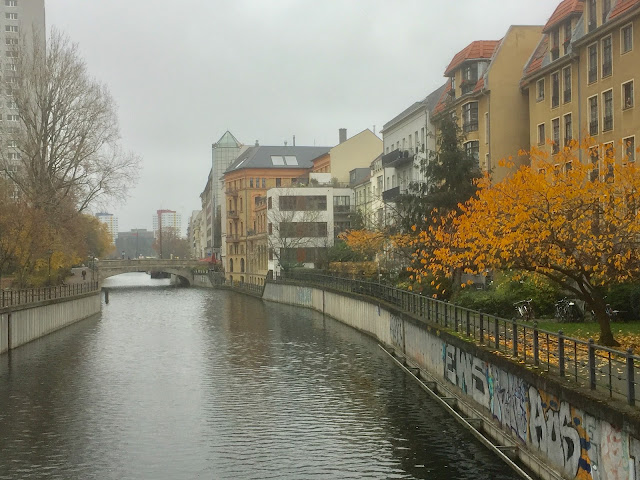



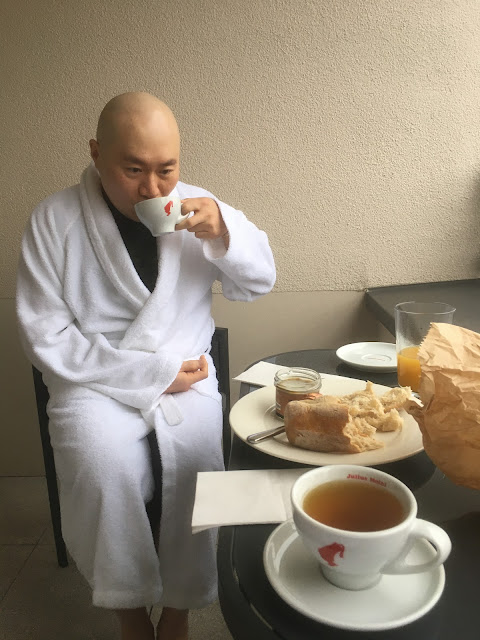














.jpg)













































































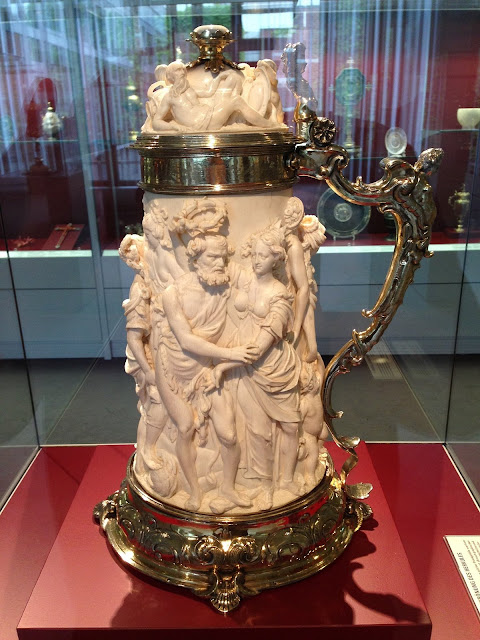






















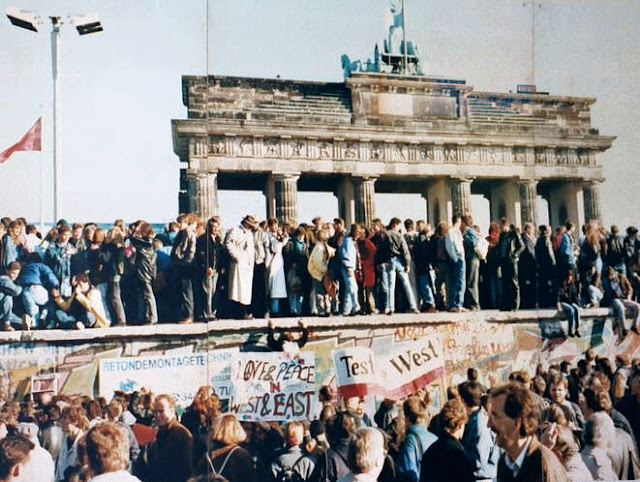















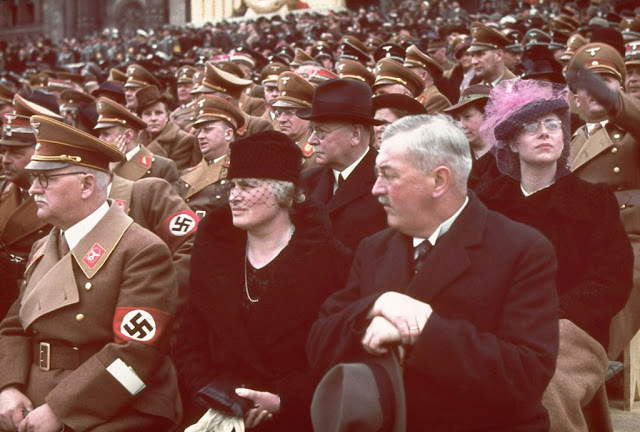






























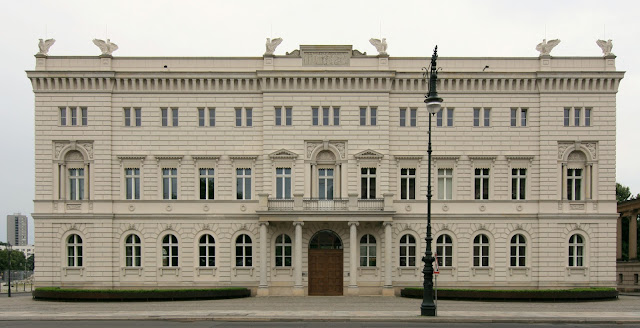
































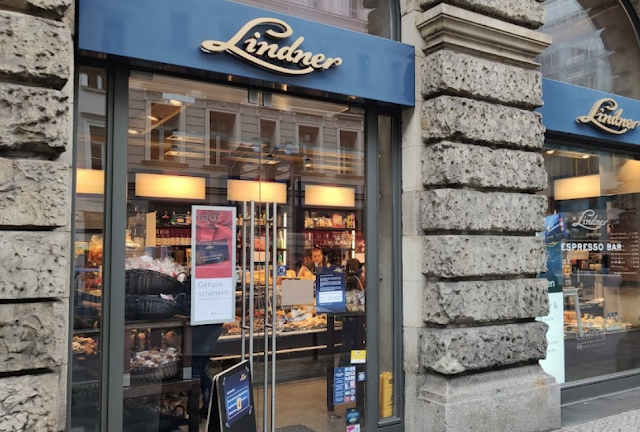































_with_skull_emblem_(Totenkopf)_Norwegian_Armed_Forces_Museum_(Forsvarsmuseet)_Oslo,_Norway_2020-02-24_2912.jpg)




















.jpg)





























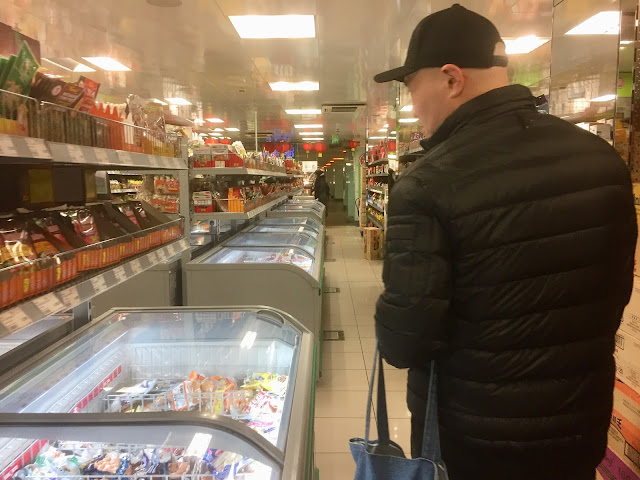






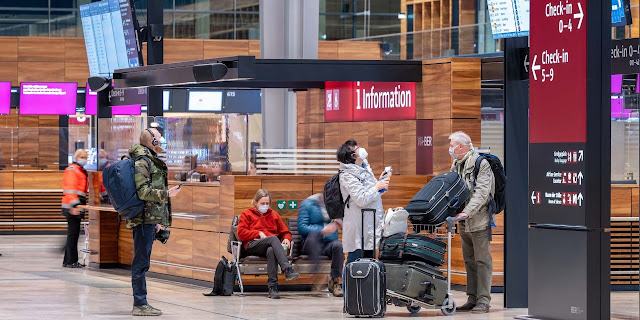



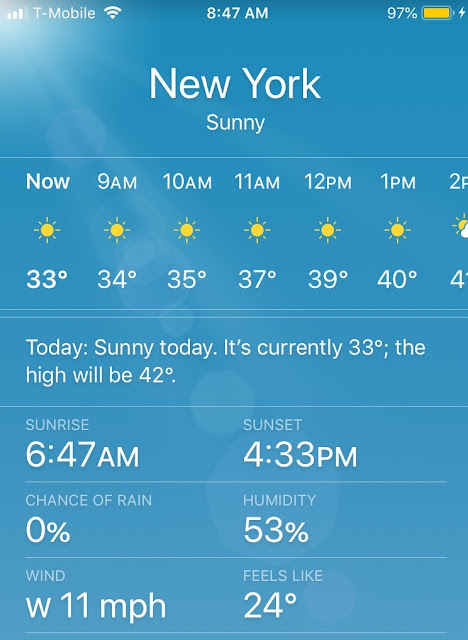




No comments:
Post a Comment
Don't be shy: leave your comments :)